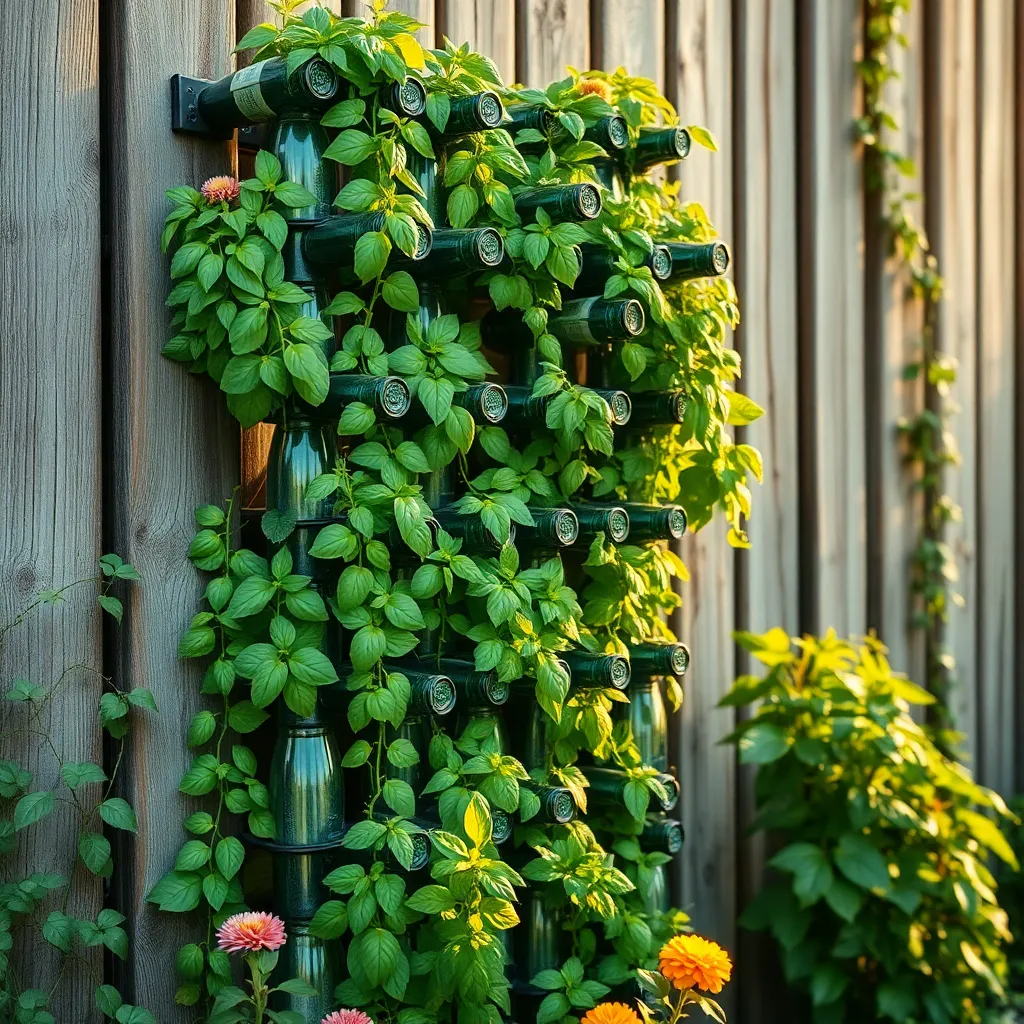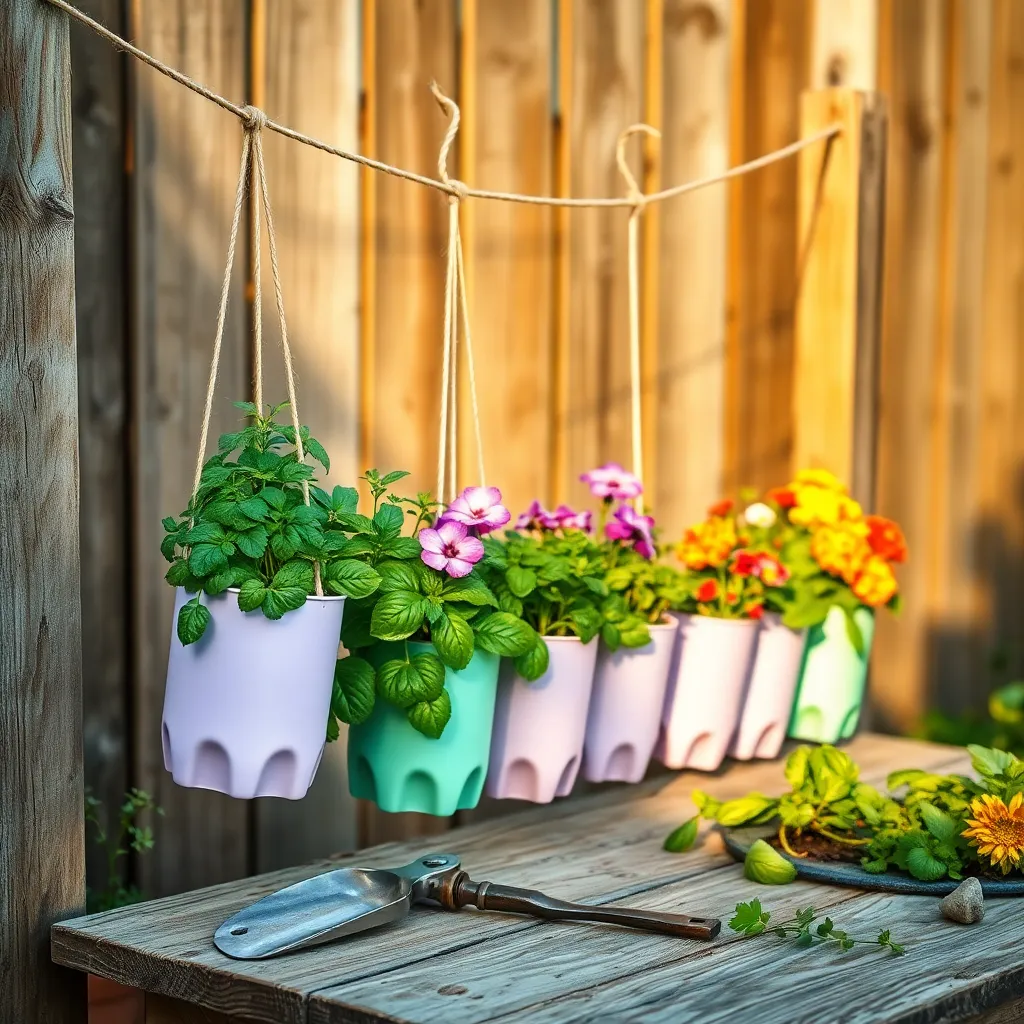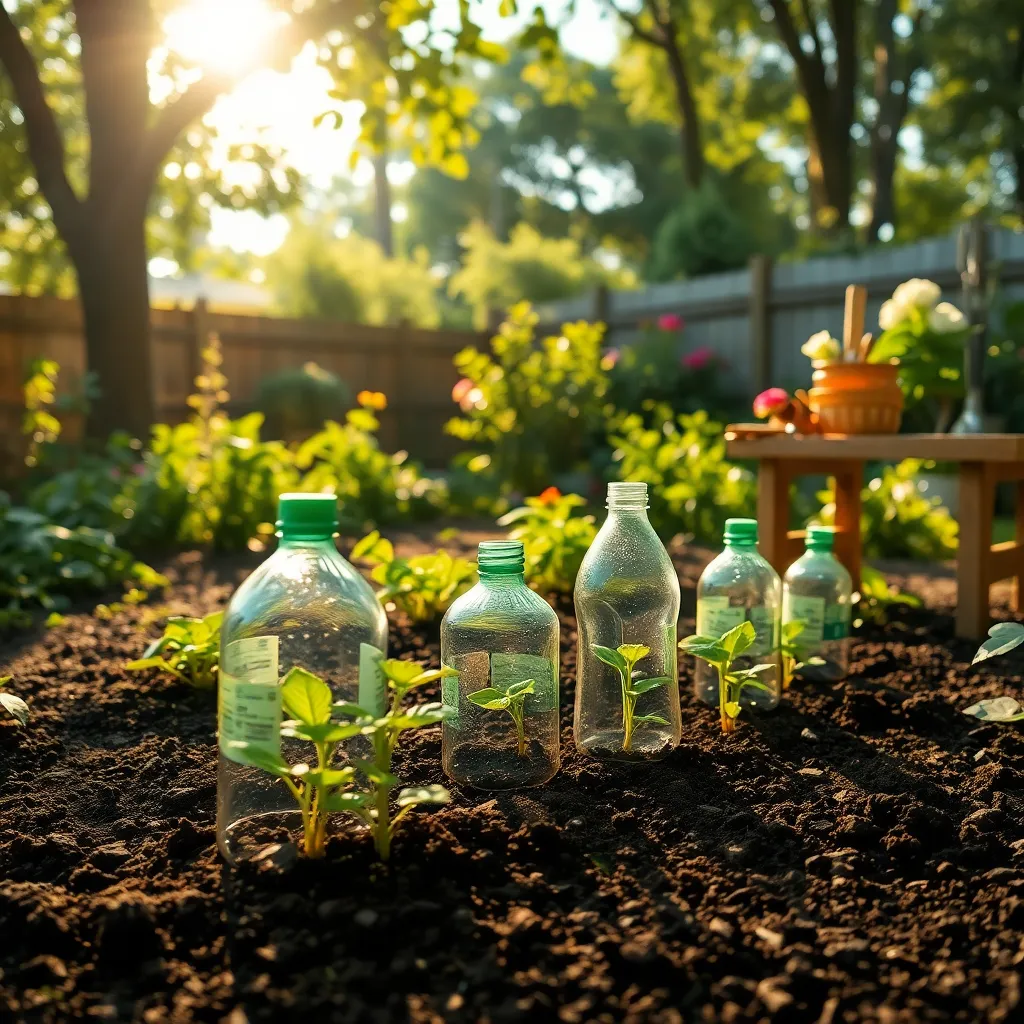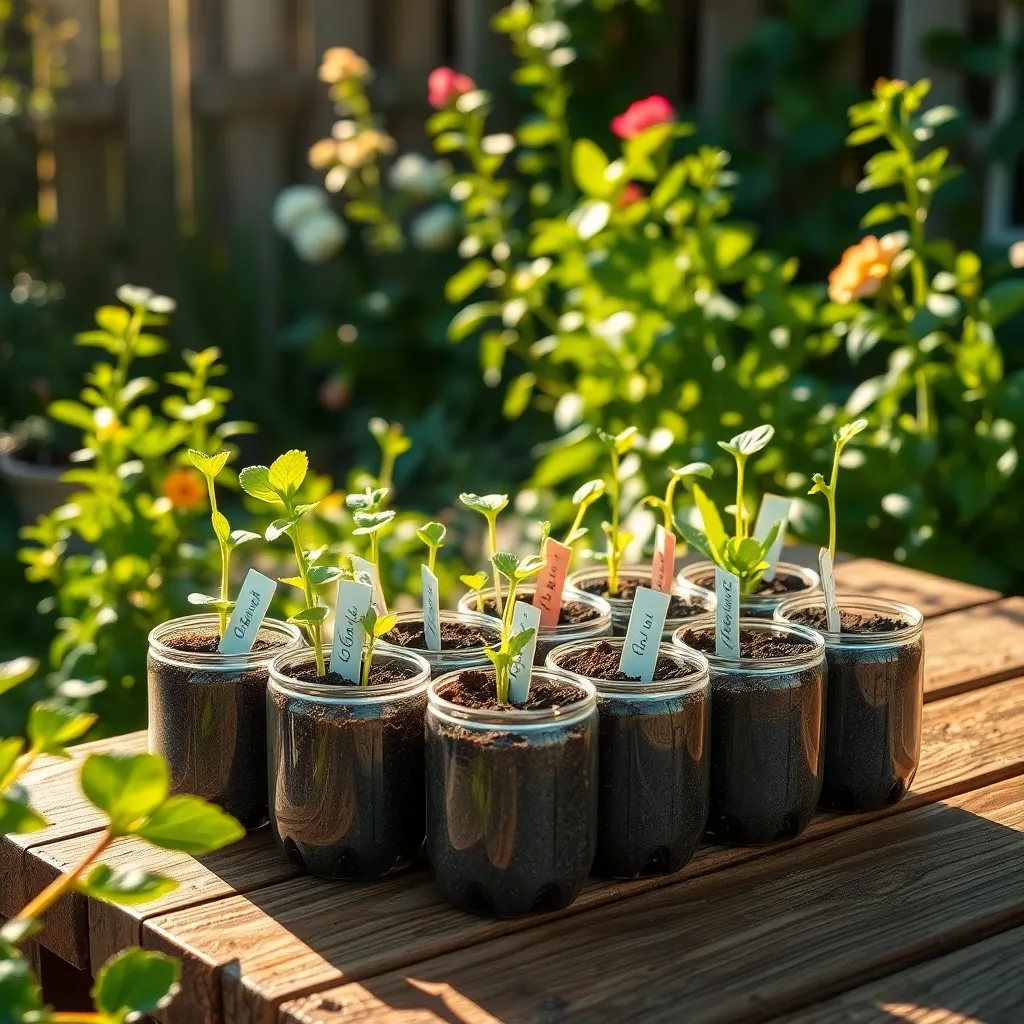Gardening is a journey where creativity meets nature, and the rewards are as vibrant as they are satisfying. For both beginners dipping their toes into the soil and seasoned green thumbs seeking fresh ideas, “Ways To Reuse Plastic Bottles In Gardening” offers a delightful blend of innovation and practicality. By incorporating everyday items into your gardening routine, you’ll not only nurture your plants but also contribute positively to our planet, crafting a garden that blooms with both beauty and sustainability.
Imagine transforming ordinary plastic bottles into garden treasures that support your plants’ growth while reducing waste. This guide is a treasure trove of practical techniques that promise to boost your confidence and inspire your gardening endeavors. You’ll discover how these simple yet effective methods can save money, conserve resources, and add a unique touch to your gardening space, ensuring your garden thrives in the most eco-friendly way.
Create Self-Watering Planters Easily

Transforming plastic bottles into self-watering planters is a simple and effective way to keep your plants hydrated. Begin by cutting a plastic bottle in half, then invert the top half into the bottom half to create a reservoir for water.
Fill the bottom half with water, ensuring it doesn’t touch the plant’s roots directly. Use a wick, such as a cotton string or strip of fabric, to connect the water in the reservoir to the soil in the upper half, allowing for consistent moisture.
Choose the right soil mix to optimize the self-watering system, using a combination of potting soil and perlite or vermiculite for improved drainage and aeration. This mix ensures the soil remains moist but not overly saturated, which is critical for plant health.
For a variety of plants, self-watering planters can be particularly beneficial, especially during hot seasons or for those with busy schedules. Monitor the water level regularly and refill the reservoir as needed to maintain a steady supply of moisture.
Build Vertical Garden Structures

Transforming plastic bottles into vertical garden structures is a sustainable way to maximize space and reduce waste. These structures are perfect for small gardens or balconies, allowing you to grow a variety of plants in a limited area.
Start by cutting the bottoms off your plastic bottles, leaving a small rim to hold soil. Securely attach the bottles to a wall or fence using nails or sturdy hooks, ensuring they’re tilted slightly forward to facilitate easy watering.
Fill each bottle with a well-draining potting mix suitable for the plants you choose. Consider growing herbs like basil or mint, which thrive in the vertical environment and require consistent moisture but not overly saturated soil.
For a more advanced setup, incorporate a drip irrigation system to ensure each plant receives adequate water. This can be achieved by connecting bottles with small tubing, allowing water to trickle down from the topmost bottle to the ones below.
Craft Hanging Bottle Planters

Crafting hanging bottle planters is a fantastic way to combine creativity with sustainability in your garden. Begin by cutting a plastic bottle in half, keeping the top portion with the cap for the planter, and making small drainage holes in the cap.
Next, fill the bottle with a mix of potting soil and perlite for improved drainage. This setup is ideal for growing herbs like basil or mint, which thrive in well-draining soil and require moderate watering.
To hang your planter, secure strong twine or wire around the bottle’s neck, ensuring it is tightly fastened to support the plant’s weight. Position the planter in a spot that receives bright, indirect sunlight, as most herbs and small plants prefer these conditions to flourish.
Advanced gardeners might try incorporating a self-watering mechanism by inserting a wick from the soil into a water reservoir below. This technique helps maintain consistent moisture levels, reducing the frequency of manual watering, especially in hotter climates.
Design Mini Greenhouse Covers

Transforming plastic bottles into mini greenhouse covers is a simple and effective way to protect young plants. Begin by cutting the bottom off a large plastic bottle, leaving the cap intact to allow for easy ventilation control.
Place the bottle over seedlings or young plants to create a warm, humid environment that promotes growth. During cooler nights or unexpected weather changes, these mini greenhouses can offer essential protection from frost and pests.
For optimal results, ensure the bottle is clear to let in maximum sunlight, which is crucial for photosynthesis. You can adjust the amount of ventilation by twisting the cap open or closed, allowing you to control the humidity and air circulation inside.
Advanced gardeners might experiment with different bottle sizes to accommodate a variety of plants, from small herbs to larger vegetable seedlings. This technique is particularly beneficial for plants that thrive in warm and humid conditions, such as tomatoes and peppers.
Fashion Durable Seedling Starters

Transforming plastic bottles into seedling starters is an eco-friendly way to begin your gardening journey. Simply cut the bottle in half, fill the bottom part with a well-draining potting mix, and plant your seeds.
Ensure the soil stays moist without becoming waterlogged by poking a few drainage holes in the base of the bottle. You can use the top half as a humidity dome by placing it over the planted seeds, creating a mini greenhouse effect that encourages faster germination.
Beginners will find this method simple and effective, while experienced gardeners can customize their setup by adding labels or dividing the space for different seed varieties. For those looking to improve their technique, try experimenting with different soil mixtures like combining peat moss, perlite, and vermiculite to enhance drainage and aeration.
Watering is crucial, especially in the early stages; aim to keep the soil consistently damp by misting it every few days. Once seedlings develop their first true leaves, remove the top half to acclimate them to outdoor conditions gradually.
Conclusion: Growing Success with These Plants
In exploring the innovative ways to reuse plastic bottles in gardening, we’ve delved into five key concepts that parallel the nurturing aspects of building strong relationships. First, we discussed communication and how clear labeling of bottles mirrors the importance of expressing needs and expectations. Next, we highlighted adaptability, akin to transforming bottles into versatile garden tools, emphasizing flexibility in relationships. We then covered sustainability, reminding us how consistent care in both gardening and relationships fosters growth. Creativity was another focal point, showcasing how imaginative solutions—like bottle planters—can refresh relationships. Lastly, collaboration was emphasized, as teamwork in creating bottle gardens strengthens bonds.
As your actionable next step, choose one of these concepts to focus on in your relationship today. Whether it’s improving communication or embracing creativity, take a small, meaningful action to nurture your connection.
Remember to bookmark this article, as it serves as a valuable resource for continuously enriching your relationships. By integrating these concepts, you’re not only transforming your garden but also paving the way for lasting relationship success. Your efforts today lay the foundation for a thriving, resilient partnership tomorrow.

